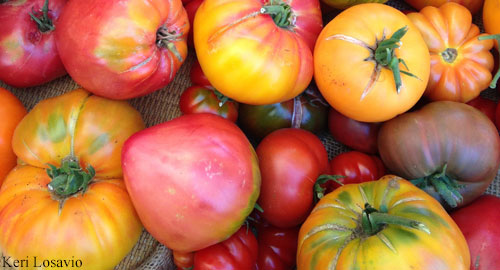 Many rheumatic conditions cause inflammation, such as rheumatoid arthritis (RA), gout, lupus, bursitis and scleroderma. “Being overweight or obese can worsen these conditions, as individuals who are overweight have higher amounts of inflammation because adipose tissue is inflammatory,” says Kim Larson, RDN, CHC, media spokesperson for the Academy of Nutrition and Dietetics, and a registered dietitian nutritionist and certified health coach, Nutrition & Health Coaching Business Total, Seattle. “So it’s important that these patients lose weight.” Here, two nutritionists provide insight into weight loss methods that they have had success with in this patient population.
Many rheumatic conditions cause inflammation, such as rheumatoid arthritis (RA), gout, lupus, bursitis and scleroderma. “Being overweight or obese can worsen these conditions, as individuals who are overweight have higher amounts of inflammation because adipose tissue is inflammatory,” says Kim Larson, RDN, CHC, media spokesperson for the Academy of Nutrition and Dietetics, and a registered dietitian nutritionist and certified health coach, Nutrition & Health Coaching Business Total, Seattle. “So it’s important that these patients lose weight.” Here, two nutritionists provide insight into weight loss methods that they have had success with in this patient population.
Strategy No. 1: Mediterranean Eating Pattern
Patients can reduce inflammation by eating whole grains; cold deep water fish and other seafood that supply omega-3 fatty acids; and extra virgin olive oil, which contains polyphenols and oleocanthal, both of which reduce inflammation.1
“This nutrient-rich diet also requires eating a lot of vegetables, which are high in water and fiber and low in calories, providing fullness and satisfaction,” says Ms. Larson. Vegetables, particularly ones that are bright-colored, such as tomatoes, carrots and dark, leafy greens, are high in phytochemicals and can lower inflammation and limit cell damage.
“[According to my clients] who follow this diet, [they] seem to have better appetite control and enjoy the wonderful variety of whole, fresh foods allowed,” Ms. Larson says. “Part of that is due to the higher healthy fat content from nuts, fish, extra virgin olive oil, avocados and seeds.”
Because this diet is not restrictive, patients don’t feel deprived. “I’ve actually had them say to me, ‘This doesn’t even feel like a diet,’” Ms. Larson says. “[Patients] enjoy this slower weight-loss approach and feel more in control and confident in their eating habits. The diet leaves little room for highly processed and refined foods, which can be pro-inflammatory.”
Strategy No. 2: Plant-Centered Eating
Some patients with arthritis conditions report that eating red meat may trigger pain and swelling for them. Although not all people react to meat as a trigger for pain, those who do may get relief by limiting fatty meats. “A plant-centered diet that uses lean meat in small amounts lowers intake of saturated fats,” Ms. Larson says. “Whole grains provide more fiber to stabilize blood sugars and maintain energy levels—both of which promote weight loss.”2
For this diet, Ms. Larson emphasizes eating vegetables and fruits, which are rich in phytochemicals and also fight inflammation. Encouraging soy foods (e.g., tofu, tempeh, edamame) provides isoflavones (a type of flavonoid), which also protects against inflammation.
“This approach works well for patients who have tried many other avenues to lose weight and want to try something different,” Ms. Larson says. “Again, it allows for slow weight loss to occur as a result of food choice changes, so maintenance is more sustainable.”
Sonya Angelone, MS, RDN, CLT, consulting nutritionist and spokesperson for the Academy of Nutrition and Dietetics, who also has a private practice in the San Francisco Bay area, says sometimes people with rheumatic conditions tend to be less active due to muscle and joint pain or fatigue and consequently are more likely to be constipated.
“When you decrease the use of outside muscles and become more sedentary, inside muscles also become sluggish and don’t function as well,” she says. “Eating a more plant-based diet can help improve bowel function and lessen constipation,” she says.
Strategy No. 3: Eliminate Added Sugars & Refined Foods
Excessive amounts of sugar can increase inflammation and wreak havoc on appetite hormones and consistent healthy eating patterns. “Substituting fresh, whole fruit for sweet desserts and sugary treats is a great way to reduce calories and promote weight loss,” Ms. Larson says. A high intake of vegetables, which provides antioxidants, vitamins, minerals and phytochemicals, is also a necessary part of a weight loss strategy, as well as controlling calories.
Additional Strategies
Along with these strategies, when Larson learns that a client has a condition that causes inflammation, she discusses using herbs and spices to reduce it (e.g., turmeric, ginger, rosemary, basil curry). “I also require clients to start an exercise regimen that is appropriate for their fitness level. We advance physical activity when they are ready,” she says.3
For people with rheumatic conditions who aren’t very active due to pain, “there are ways to be active without stressing the joints,” Ms. Angelone says. “Patients can perform gentle exercises that don’t aggravate their joints by sitting in a chair or lying on the floor, such as Pilates or yoga.”
Ms. Larson also encourages clients to eat balanced meals at regular intervals and to eat breakfast in the morning within an hour of waking up. “This [habit] allows for consistent fueling throughout the day, so that energy levels stay high and appetite hormones stay in check,” she says.
When a client is committed to making changes, Ms. Angelone asks them to track their foods, beverages and activity and recommends modifications based on their current habits, as well as nutrition and medical needs.
Karen Appold is a medical writer in Pennsylvania.
References
- U.S. Department of Health and Human Services. National Center for Complementary and Integrative Health: Omega-3 supplements: In depth. 2016 Jul 12.
- Gaby, AR. Vegan diet for rheumatoid arthritis. Townsend Letter for Doctors and Patients. 2004 May:p 26.
- Arthritis Foundation. Arthritis diet: Best spices for arthritis: Season your food with anti-inflammatory spices. 2017


